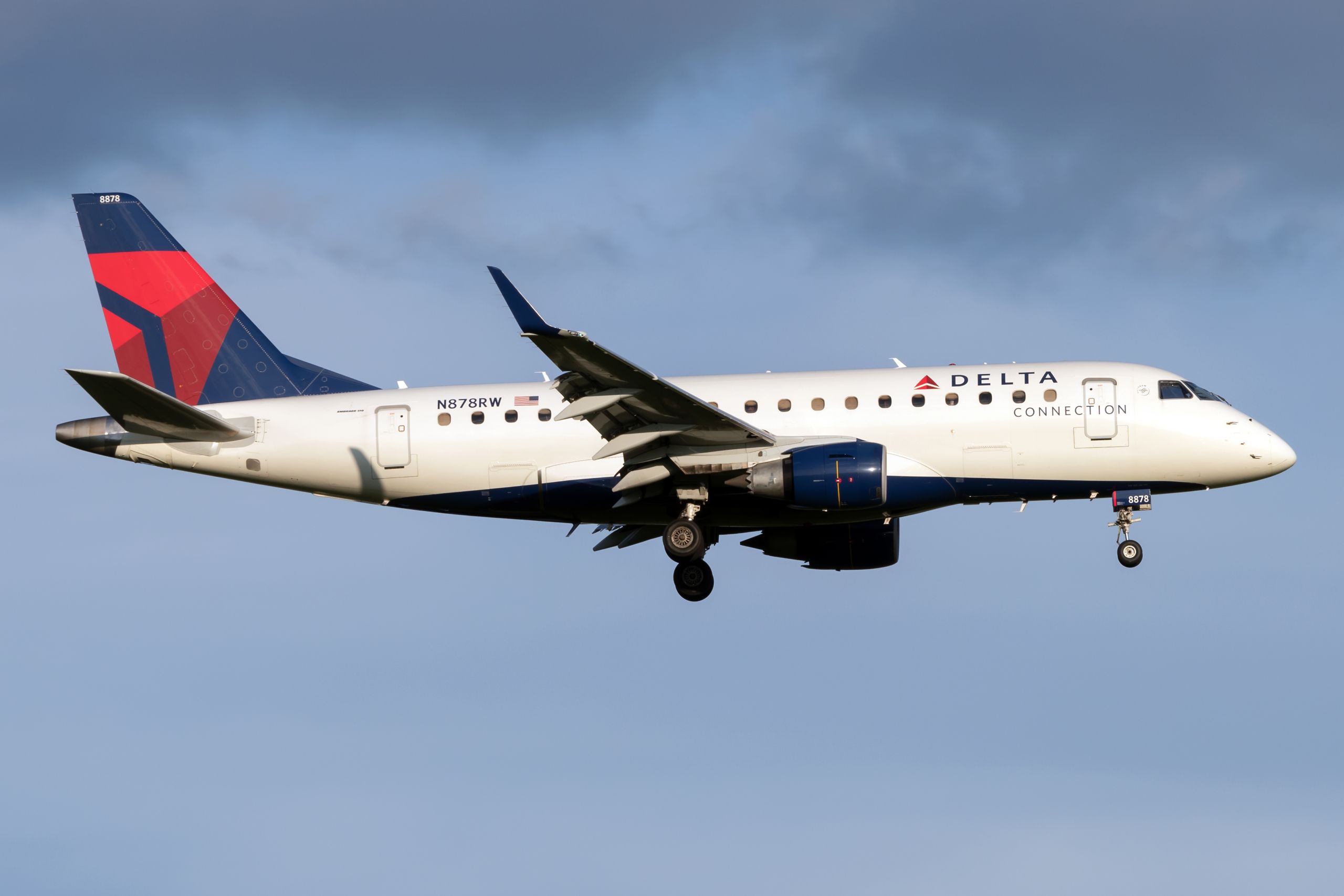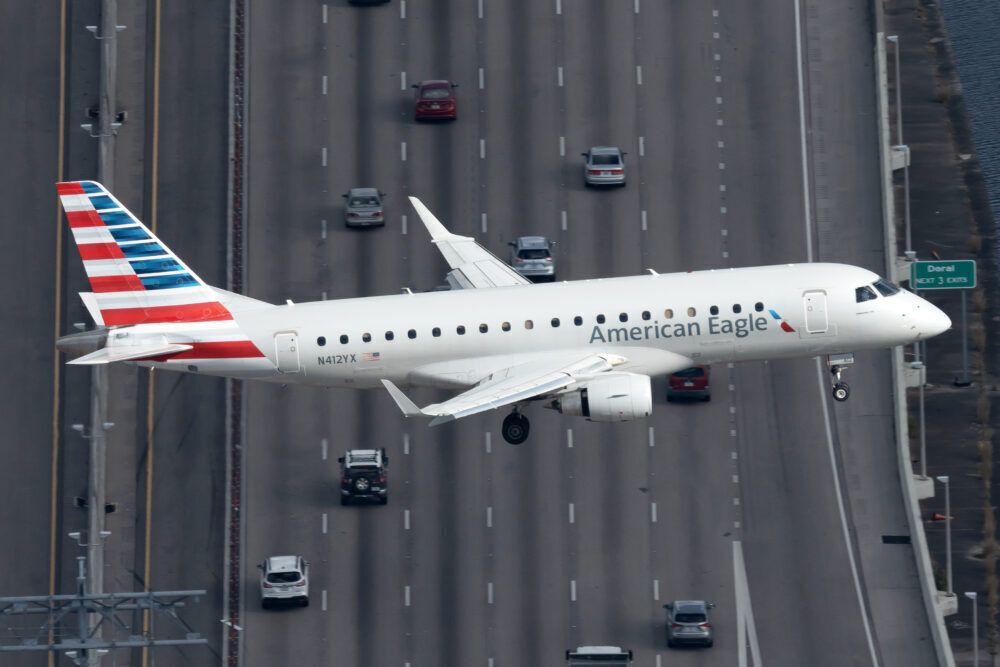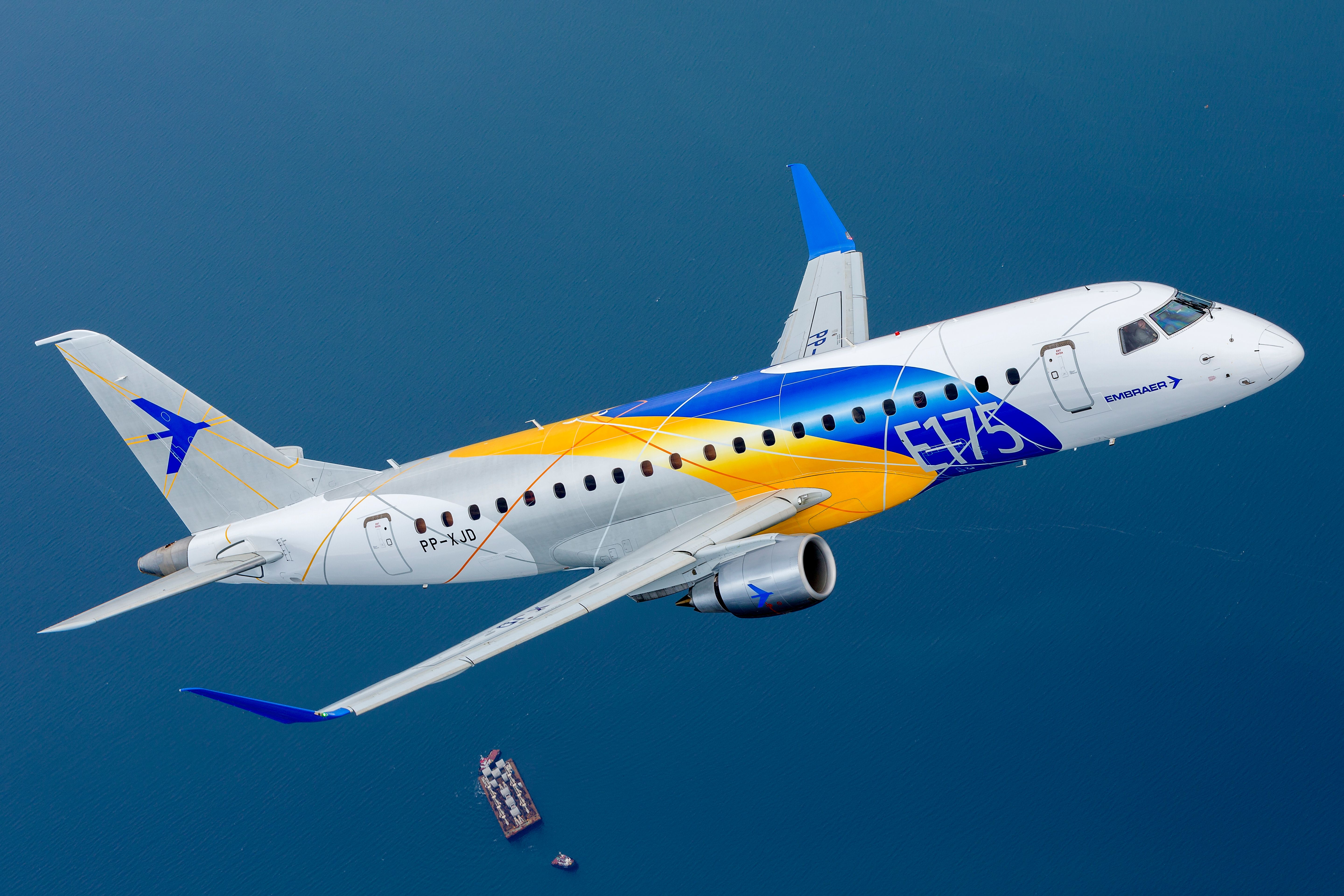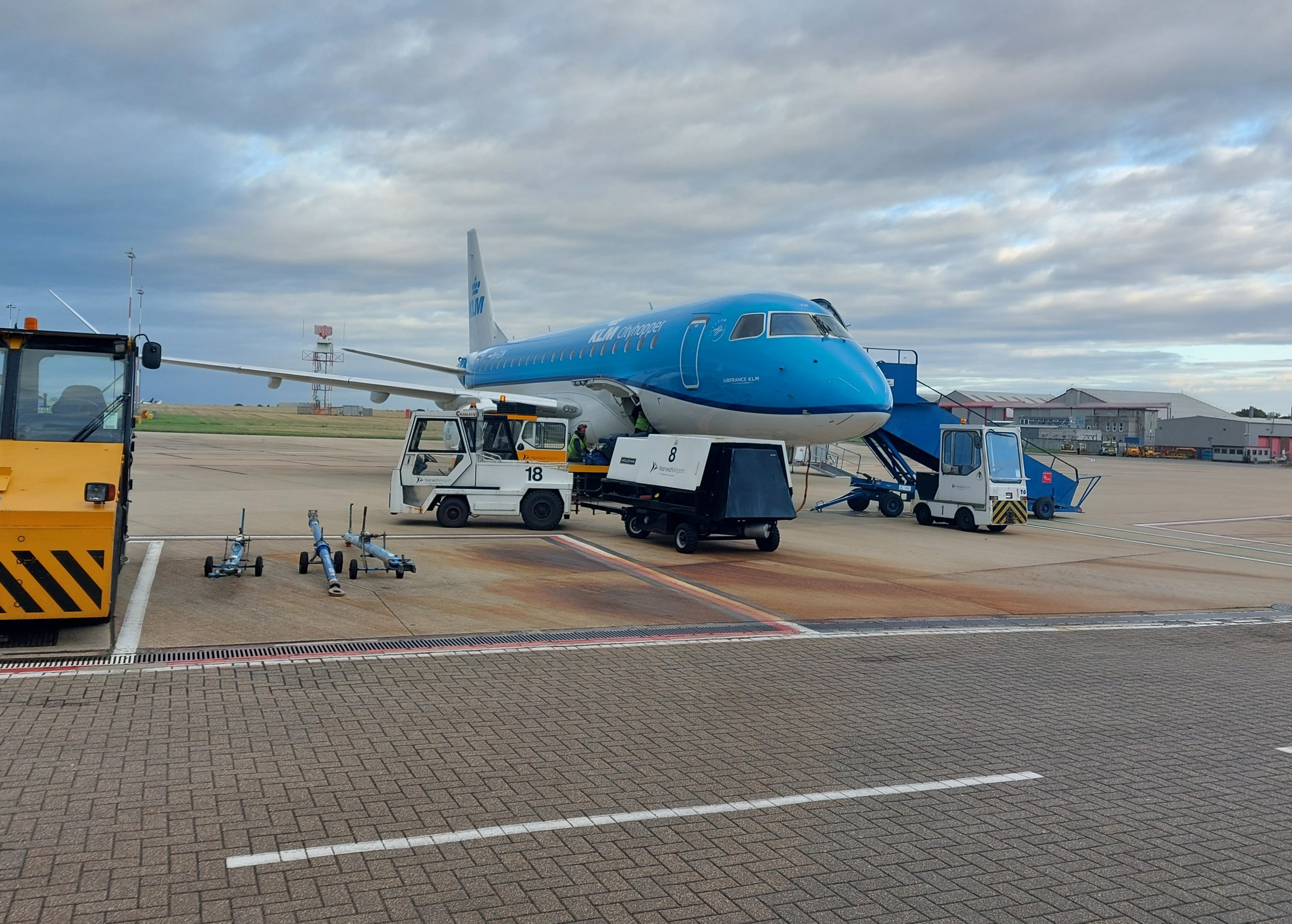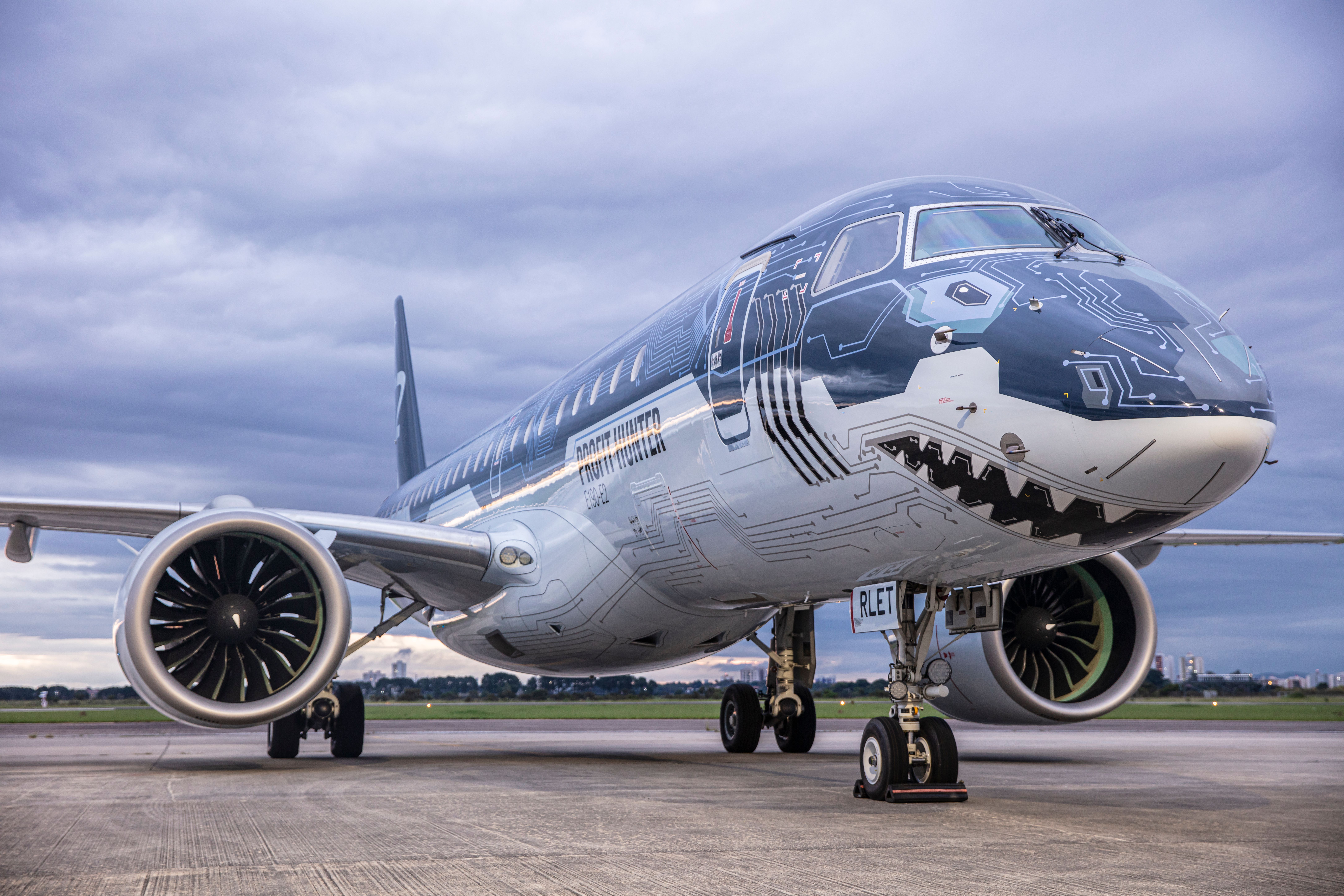Since its introduction in 2004, Embraer's E-Jet family has become a staple of regional flying worldwide. The manufacturer had delivered almost 1,700 E-Jets as of November, including aircraft from the next-generation E2 family that are now rolling off the production line. The smallest E-Jets are the E170 and E175 models, but how exactly do these planes differ? Let's take a closer look and find out.
Dimensional differences
Let's start by looking at how the Brazilian planemaker's E170 and E175 variants compare and contrast when it comes to their performance and specifications. The E170, which was the first variant from the E-Jet family to enter service (with LOT Polish Airlines in 2004), clocks in at 29.90 meters long, or 98 feet and one inch.
Meanwhile, the 31.67-meter-long (103 feet and 11 inches) Embraer E175 model entered service with Air Canada in 2005. This slight stretch allows the E175 to carry a handful more passengers than its earlier and smaller counterpart. Indeed, a typical two-class seating configuration on the E170 will accommodate 66 passengers, compared to 76 on the larger E175. Neither model has overwing exits.
Want answers to more key questions in aviation? Check out the rest of our guides here!
When it comes to one-class seating configurations, these typically see the E170 seat between 72 and 78 passengers, compared to the 78 to 88 that can be accommodated on the E175. While their lengths may differ, the standard-range models share the same 26.01-meter (84 feet and four inches) wingspan.
In terms of height, the 9.86-meter-tall (32 feet and four inches) E175 beats the 9.83-meter-tall (32 feet and three inches) E170 by a narrow margin. Having established the nature of the jets in terms of size, let's now examine their performance.
Performance statistics
Both the E170 and the E175 are powered by General Electric's CF34-8E engines. These turbofans, which each produce 14,200 lbf (63 kN) of thrust, can also be found on the Bombardier CRJ family of regional jets, as well as China's COMAC ARJ21. As such, they are well suited to the sort of work that Embraer E-Jets face every day.
These engines work in tandem to enable both the E170 and E175 to cruise at a speed of Mach 0.75 (430 knots / 797 km/h). They also provide both models with a maximum speed of Mach 0.82 (470 knots / 871 km/h). The designs share a service ceiling of 41,000 feet, although they will often not get anywhere near that high on some of the shorter flights which make up their day-to-day work at some carriers.
When it comes to range, there is little to separate the E170 and E175. The latter, larger design just has the edge, and can fly for up to 2,200nmi (4,074 km). However, the smaller E170 pushes it very close, with a range of 2,150nmi (3,982 km). As such, the primary difference between the two remains their capacities. But how have these various factors pertaining to performance impacted how they've sold?
Contrasting orders and deliveries
We have now established that there is little to separate the E170 and E175 in terms of their dimensions and performance. However, there is certainly a much larger gap when between the pair it comes to how well each of these twin-engine regional jet designs has performed in a commercial sense, with contrasting sales fortunes.
Indeed, as of November 2022, Embraer's results showed that it had delivered just 191 E170s, with no outstanding orders. Meanwhile, the E175 remains the most popular variant in the entire E-Jet family, with 714 examples having already been delivered. Furthermore, the Brazilian manufacturer still has a backlog of a further 103 firm orders for the E175, so production will continue for some time.
This contrast has also shaped the next-generation E-Jet E2 family. Indeed, the low-selling E170 is the only variant that won't be modernized in the form of an E2 model. That being said, the E175-E2's first flight is still a way off as it stands. The type has sold poorly in the US, and is now not expected to hit the skies until 2024.
Have you flown on any aircraft from Embraer's E-Jet family? Which is your favorite model? Let us know your thoughts and experiences in the comments!
Sources: Embraer

